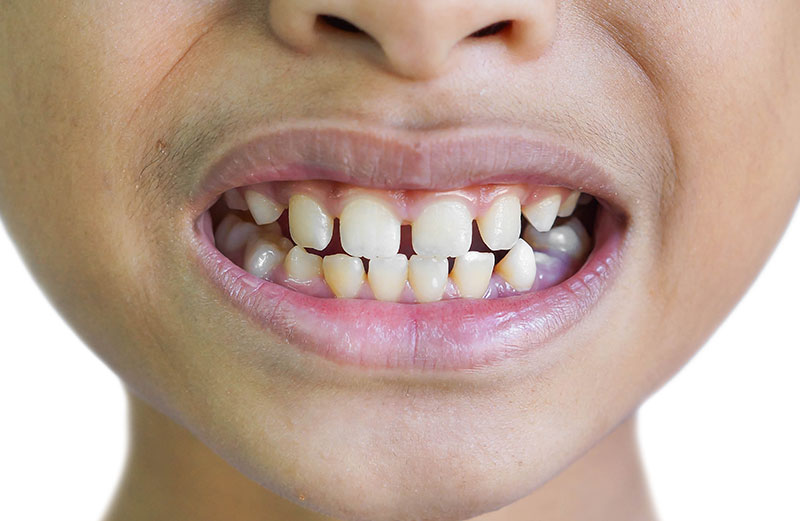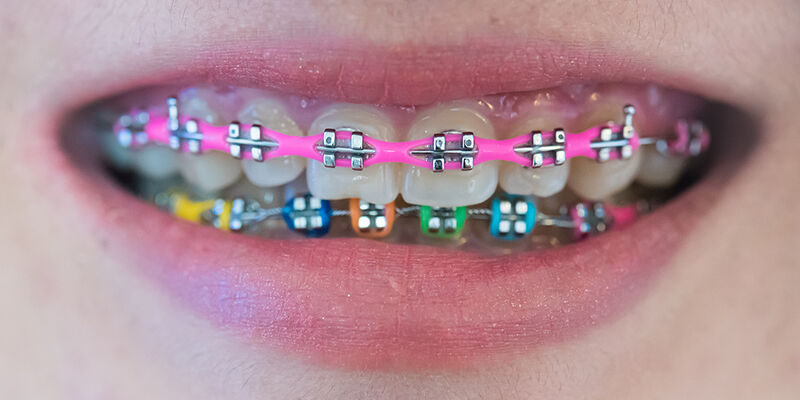Frenectomy for midline diastema

A midline diastema, the gap between the two upper front teeth, can be a distinctive feature for some, but for others, it may be an aesthetic concern. One of the potential causes of a midline diastema is an enlarged or low-attaching labial frenum, the tissue connecting the upper lip to the gums. A surgical procedure called a frenectomy can effectively address this issue. This comprehensive guide explores the causes, procedure, benefits, and considerations of frenectomy for midline diastema.
Understanding Midline Diastema
A midline diastema is a space between the central incisors (upper front teeth). It can result from various factors, and identifying the underlying cause is essential for selecting the appropriate treatment.
Common Causes of Midline Diastema:
- Genetics: Diastema can be inherited, meaning it runs in families.
- Frenum Attachment: A large or low-attaching labial frenum can push the front teeth apart, creating a gap.
- Tooth Size Discrepancy: If the teeth are too small for the jaw, gaps can form.
- Habits: Thumb sucking, tongue thrusting, or prolonged pacifier use can cause gaps.
- Gum Disease: Periodontal disease can lead to bone loss and gum recession, resulting in teeth shifting.
- Missing Teeth: The absence of adjacent teeth can cause the remaining teeth to shift and create a gap.
Diagnosing Midline Diastema
Proper diagnosis involves a thorough examination by a dental professional to determine the cause of the diastema.
- Visual Examination: The dentist or orthodontist examines the teeth and gums.
- X-rays: Dental X-rays reveal bone structure, tooth positioning, and any underlying issues.
- Frenum Assessment: Evaluating the labial frenum to see if it is contributing to the diastema.
- Bite Analysis: Checking how the upper and lower teeth fit together to identify alignment issues.
What is a Frenectomy?
A frenectomy is a minor surgical procedure that involves removing or repositioning the labial frenum. This can help close a midline diastema if the frenum is the primary cause of the gap.
Types of Frenectomy:
- Labial Frenectomy: This procedure targets the labial frenum, the tissue connecting the inside of the upper lip to the gums.
- Lingual Frenectomy: This procedure addresses the lingual frenum, the tissue under the tongue that connects it to the floor of the mouth. It’s not related to midline diastema but can be necessary for other dental issues.
Procedure for Frenectomy
The frenectomy procedure is straightforward and typically performed under local anesthesia. Here’s a step-by-step overview:
- Consultation and Diagnosis: The first step is a consultation with a dental professional to confirm that the frenum is the cause of the diastema.
- Anesthesia: Local anesthesia is administered to numb the area, ensuring a painless procedure.
- Frenum Removal or Repositioning: The dentist or oral surgeon uses a scalpel, laser, or other surgical tools to remove or reposition the frenum.
- Sutures: In some cases, sutures may be used to close the incision. If a laser is used, sutures may not be necessary as the laser seals the blood vessels.
- Post-Operative Care: The patient receives instructions on how to care for the surgical site to ensure proper healing.
Benefits of Frenectomy for Midline Diastema
- Effective Solution: A frenectomy can effectively address the cause of the diastema if the frenum is the primary issue.
- Minimally Invasive: The procedure is relatively simple and minimally invasive, with a quick recovery time.
- Improved Aesthetics: By addressing the underlying cause, a frenectomy can help close the gap and improve the appearance of the smile.
- Enhanced Orthodontic Treatment: If braces or other orthodontic treatments are needed, a frenectomy can facilitate better results by removing an obstacle to tooth movement.
Post-Operative Care and Recovery
Proper care after a frenectomy is essential for successful healing. Here are some tips for post-operative care:
- Follow Instructions: Adhere to the post-operative care instructions provided by the dental professional.
- Oral Hygiene: Keep the surgical site clean by gently brushing and rinsing with a prescribed mouthwash or saltwater solution.
- Avoid Irritation: Refrain from eating hard or spicy foods that can irritate the surgical site.
- Pain Management: Over-the-counter pain relievers can help manage any discomfort.
- Follow-Up Appointment: Attend any follow-up appointments to ensure proper healing.
Alternative Treatments
While a frenectomy is effective for cases where the frenum is the cause of the diastema, other treatments might be necessary if there are additional factors contributing to the gap.
- Orthodontic Treatment: Braces or clear aligners (such as Invisalign) can gradually move the teeth into the correct position, closing the gap.
- Dental Bonding: A tooth-colored resin is applied to the teeth to close the gap, providing an immediate aesthetic improvement.
- Porcelain Veneers: Thin shells of porcelain are bonded to the front surfaces of the teeth, offering a durable and natural-looking solution.
- Dental Crowns: Crowns can be placed over the teeth to close the gap, especially if the teeth are also damaged or have other cosmetic issues.
Choosing the Right Treatment
Selecting the appropriate treatment for a midline diastema depends on various factors, including the size of the gap, the underlying cause, and the patient’s preferences and budget. Here are some considerations:
- Extent of the Gap: Larger gaps may require orthodontic treatment, while smaller gaps might be addressed with bonding or veneers.
- Cause of the Diastema: Understanding the cause of the gap is crucial for selecting the most effective treatment. For example, if the gap is due to a prominent frenum, a frenectomy may be necessary.
- Aesthetic Goals: Patients seeking a quick and minimally invasive solution may prefer bonding, while those looking for a more durable and permanent solution might opt for braces or veneers.
- Budget: Some treatments, like bonding, are more affordable than others, like orthodontic treatment or veneers.
Conclusion
A frenectomy for midline diastema is a highly effective and minimally invasive solution for closing the gap between the upper front teeth when a prominent or low-attaching labial frenum is the cause. The procedure offers immediate and long-lasting results, improving both aesthetics and oral health. However, it is essential to consult with a dental professional to determine the best treatment plan based on individual needs and preferences. With proper care and follow-up, a frenectomy can provide a beautiful, gap-free smile that enhances both appearance and confidence.
Related to read:
Best Oral Hygiene Practices For Optimum Oral Health.
How to Whiten Teeth Naturally?
How to keep your gums healthy and disease-free?
References
To ensure the information provided is accurate and up-to-date, the following sources were referenced:
- American Dental Association. (n.d.). Plaque and Tartar. Retrieved from ADA website
- Mayo Clinic. (n.d.). Dental Plaque. Retrieved from Mayo Clinic website
- National Institute of Dental and Craniofacial Research. (n.d.). Periodontal (Gum) Disease. Retrieved from NIDCR website
Does the Maxillary Midline Diastema Close After a Frenectomy?
A frenectomy alone typically does not close a maxillary midline diastema. The procedure removes or repositions the labial frenum, which is the tissue that can push the two upper front teeth apart. While removing the frenum eliminates one barrier to closing the gap, additional orthodontic treatment, such as braces or clear aligners, is usually required to move the teeth together and achieve full closure of the diastema.
The frenectomy is an essential step for ensuring that any subsequent orthodontic treatment is effective and long-lasting. By eliminating the restrictive tissue, it prevents the frenum from pulling the teeth apart again in the future, making it easier to maintain a closed diastema once it has been corrected.
Will a Frenectomy Close the Gap?
A frenectomy itself will not close the gap between the upper front teeth. While the procedure removes the frenum that can cause the teeth to separate, additional treatments are necessary to move the teeth together.
- Orthodontic Treatment: Braces or clear aligners are typically needed to gradually shift the teeth into the desired position. These orthodontic appliances apply consistent pressure to bring the teeth together over time.
- Dental Bonding: In some cases, dental bonding can be used to close smaller gaps. A tooth-colored resin is applied to the teeth and shaped to close the space, providing an immediate aesthetic improvement.
- Veneers or Crowns: For larger gaps or additional cosmetic concerns, veneers or crowns can be applied to the teeth to close the gap and enhance the appearance of the smile.
When is the Best Time for a Frenectomy?
The best time for a frenectomy depends on the individual’s age and the specific circumstances causing the midline diastema. Here are some general guidelines:
- Children: For young children, a frenectomy is usually delayed until the permanent teeth have erupted. If the diastema persists after the eruption of the permanent teeth, the procedure can be considered. Performing the frenectomy too early can result in the gap reopening as the child grows and new teeth come in.
- Adolescents and Adults: For older children, adolescents, and adults, a frenectomy can be performed once it is clear that the frenum is contributing to the diastema. If orthodontic treatment is planned, the frenectomy is often done before or during the early stages of the orthodontic process to ensure the teeth can move freely and the results are stable.
- Orthodontic Treatment: If orthodontic treatment is planned to close the diastema, the frenectomy should be timed to support the movement of the teeth. The orthodontist will coordinate the procedure to maximize the effectiveness of the treatment plan.
How Do You Reduce Midline Diastema?
Reducing a midline diastema involves various treatments based on the size of the gap, the underlying cause, and the patient’s preferences. Here are some common methods:
- Orthodontic Treatment:
- Braces: Traditional metal braces or clear ceramic braces can effectively close gaps by applying continuous pressure to move the teeth into the desired position.
- Clear Aligners: Invisalign and other clear aligner systems are a popular choice for adults and teens, offering a discreet way to close the gap with a series of custom-made aligners.
- Dental Bonding:
- A tooth-colored resin is applied to the teeth to fill the gap. This is a quick and cost-effective solution, but it may not be as durable as other methods and may require periodic touch-ups.
- Porcelain Veneers:
- Veneers are thin shells of porcelain bonded to the front surfaces of the teeth. They provide a durable and natural-looking solution for closing gaps and can address additional cosmetic concerns.
- Dental Crowns:
- Crowns can be placed over the teeth to close the gap, particularly if the teeth are also damaged or have significant cosmetic issues.
- Frenectomy:
- If the diastema is caused by a prominent labial frenum, a frenectomy can remove or reposition the tissue, making it easier to close the gap with orthodontic treatment.
- Frenectomy Followed by Orthodontic Treatment:
- For gaps caused by a prominent frenum, combining a frenectomy with orthodontic treatment can provide a comprehensive solution. The frenectomy removes the tissue barrier, while braces or aligners move the teeth together.
- Habit Modification:
- Addressing habits such as thumb sucking or tongue thrusting, which can cause or exacerbate diastema, is important. Behavioral therapy or appliances like tongue cribs can help eliminate these habits.
Conclusion
A midline diastema, or gap between the upper front teeth, can be addressed through various treatments depending on the cause and severity of the gap. While a frenectomy removes or repositions the labial frenum contributing to the diastema, it typically needs to be combined with orthodontic treatment or other dental procedures to fully close the gap. The best time for a frenectomy depends on the individual’s age and treatment plan, with coordination often required to maximize the effectiveness of orthodontic interventions. Reducing a midline diastema can involve braces, clear aligners, dental bonding, veneers, crowns, or habit modification, each tailored to the patient’s specific needs and preferences.








